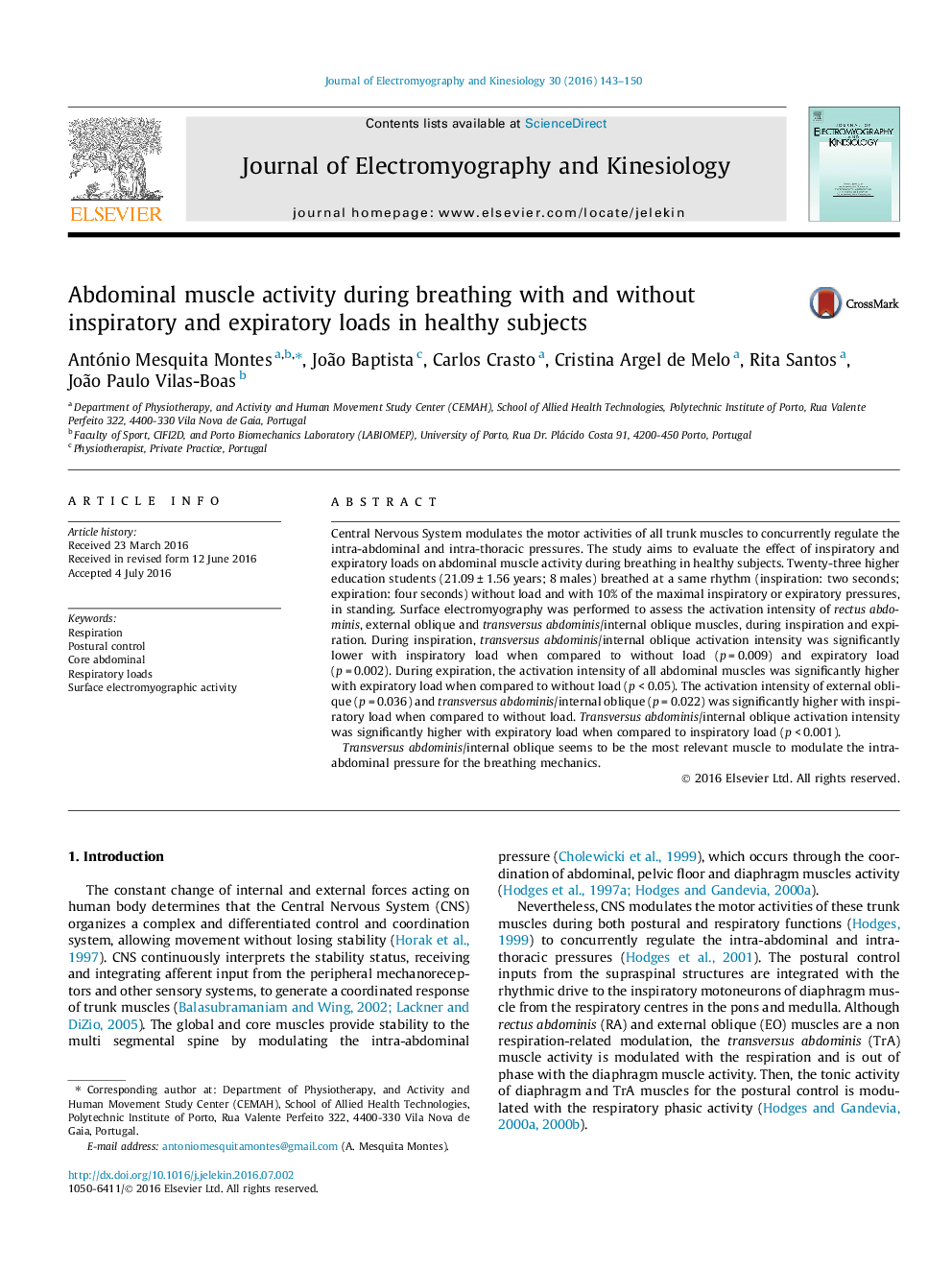| Article ID | Journal | Published Year | Pages | File Type |
|---|---|---|---|---|
| 4064364 | Journal of Electromyography and Kinesiology | 2016 | 8 Pages |
Central Nervous System modulates the motor activities of all trunk muscles to concurrently regulate the intra-abdominal and intra-thoracic pressures. The study aims to evaluate the effect of inspiratory and expiratory loads on abdominal muscle activity during breathing in healthy subjects. Twenty-three higher education students (21.09 ± 1.56 years; 8 males) breathed at a same rhythm (inspiration: two seconds; expiration: four seconds) without load and with 10% of the maximal inspiratory or expiratory pressures, in standing. Surface electromyography was performed to assess the activation intensity of rectus abdominis, external oblique and transversus abdominis/internal oblique muscles, during inspiration and expiration. During inspiration, transversus abdominis/internal oblique activation intensity was significantly lower with inspiratory load when compared to without load (p = 0.009) and expiratory load (p = 0.002). During expiration, the activation intensity of all abdominal muscles was significantly higher with expiratory load when compared to without load (p < 0.05). The activation intensity of external oblique (p = 0.036) and transversus abdominis/internal oblique (p = 0.022) was significantly higher with inspiratory load when compared to without load. Transversus abdominis/internal oblique activation intensity was significantly higher with expiratory load when compared to inspiratory load (p < 0.001).Transversus abdominis/internal oblique seems to be the most relevant muscle to modulate the intra-abdominal pressure for the breathing mechanics.
